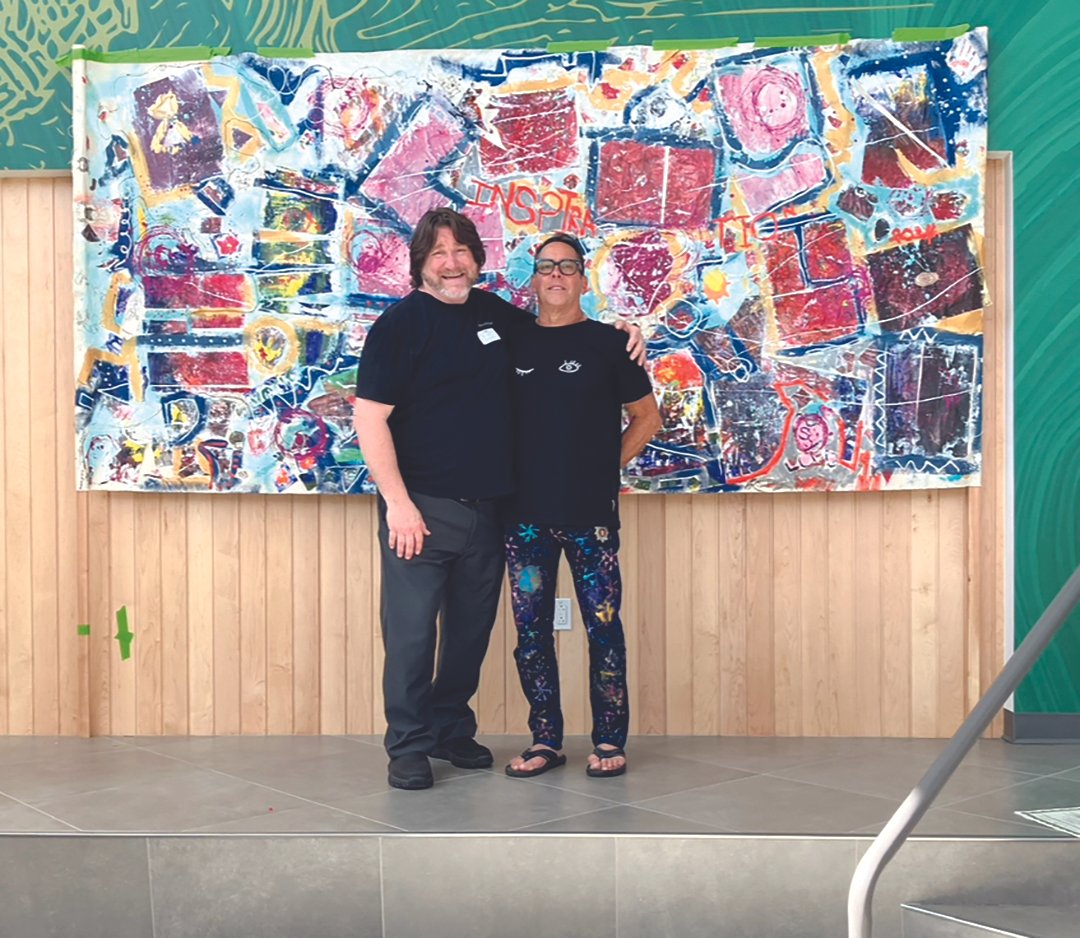Our Story
Through the ages, human beings have held back the darkness by creating powerful works of art that engage and uplift their communities and are beacons of inspiration. In this monumental work of art the classical figure of Infinite Possibilities is marshaling the transformative power of light that will radiate around the world. It will pierce through the darkness and uncertainty to ignite humanity’s most courageous, compassionate, and generous nature.
Ours is an extraordinary team of visionary creatives and enlightened corporate executives working in concert, and over a period of years, with renowned sculptor Renee Rhodes to bring to fruition the vision of a monumental work of art that will serve as an elevating beacon to travelers on both land and sea.
The Infinite Possibilities project includes structural design, casting, lighting and installation engineers, a world-class bronze foundryman, an internationally- famous bronze restorationist, a renown sculpture fabrication and installation expert, a prominent musical composer, an award-winning documentarian, and a distinguished publisher and editor. Additional team members include educators, artists, landscape architects, photographers, community organizers, writers, fundraisers, and arts administrators.
Our team, and many thousands of others, have seen and felt the transformative beauty and power of existing Rhodes’ public art installations. Infinite Possibilities will rise a soaring 30-foot high—a classical 21-foot figure grasping a 10-foot tall brightly illuminated stainless steel infinity symbol. It will be the largest illuminated sculpture on the coast of the United States after the Statue of Liberty. We believe this ambitious and monumental work, truly a legacy installation for Renee Rhodes, will delight and inspire the American public and international visitors for many generations.
A perfect location, Ocean Beach State Park, near the confluence of the Thames River and Long Island Sound, has been secured and approved by the City of New London. This inspirational gateway sculpture will become iconic, symbolizing a beacon of hope from the Connecticut shore; and with the combined traffic of Ocean Beach and its waterways, draw in a total of over 1.5 million visitors annually.
Public art adds value to the cultural, aesthetic and economic vitality of a community; it enhances a shared environment, transforms a landscape and marks it as significant; it deepens our sense of belonging. It makes us pay attention, encourages us to question what’s around us, to make connections to our history, the natural world, and to our community: and in the manner of all truly significant works of art, inspires awe, and signals further, deeper, thought.
FAQs
-
Public art because it enriches communities, sparks creativity, and fosters connection among people. Public art transforms shared spaces into vibrant, inspiring environments that reflect culture and diversity. By supporting public art, it hopes to empower artists, celebrate creativity, and contribute to making art accessible and meaningful for everyone.
-
It’s simple! Head over to our Donation page and enter the amount you’d like to donate - every dollar helps!.
We accept all major credit cards and debit cards.
-
Donating to public art helps the community by enhancing shared spaces, creating a sense of identity and pride, and fostering social connections. Public art encourages dialogue, inspires creativity, and makes cultural and historical expressions accessible to all. It also supports local artists, boosts tourism, and can positively impact mental health by creating uplifting and beautiful environments.
-
The lost-wax technique, also known as cire perdue, is an ancient method of metal casting used to create detailed sculptures, jewelry, and art pieces. This process has been practiced for thousands of years and is still widely used today due to its ability to produce intricate and precise results. Here's how it works:
### Steps in the Lost-Wax Technique:
1. Model Creation:
- An artist creates a detailed model of the desired object using wax or another easily meltable material.
2. Mold Making:
- The wax model is encased in a mold material, often made of clay, plaster, or a similar substance. This mold is built up in layers to ensure durability.
3. Wax Removal (Lost-Wax Stage):
- The mold is heated, causing the wax to melt and drain away, leaving a hollow cavity in the shape of the original wax model.
4. Casting:
- The cavity is then filled with molten metal, such as bronze, gold, or silver. The metal flows into the intricate spaces of the mold, capturing the fine details.
5. Cooling and Breaking the Mold:
- Once the metal cools and solidifies, the outer mold is carefully broken away, revealing the metal object.
6. Finishing Touches:
- The cast piece is cleaned, polished, and refined. Artists may add patinas or other treatments to achieve the desired finish.
### Why Use Lost Wax?
- It allows for extremely detailed and complex designs.
- The technique ensures a one-of-a-kind piece, as the wax model is destroyed during the process.
- It is versatile and can be used for small, intricate jewelry or large-scale sculptures.
The lost-wax method has been employed across cultures—from ancient Mesopotamia and Egypt to modern artisans—demonstrating its enduring value in creating exquisite works of art.



